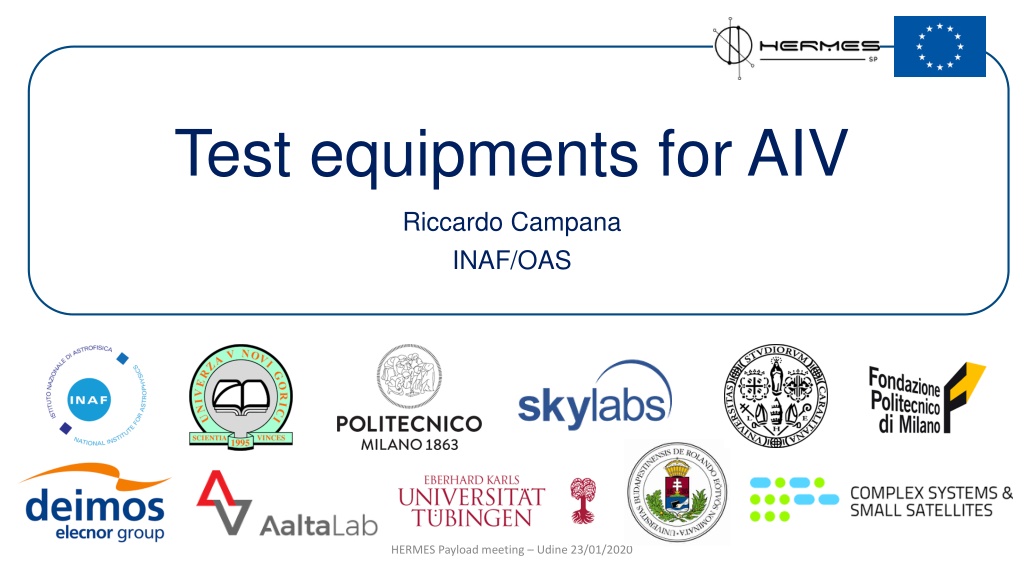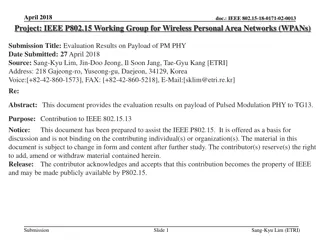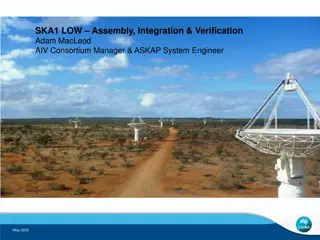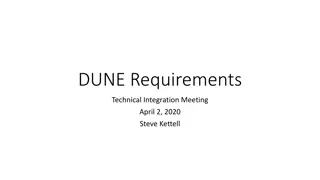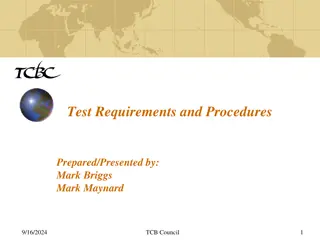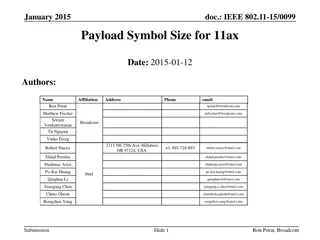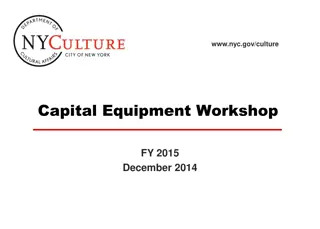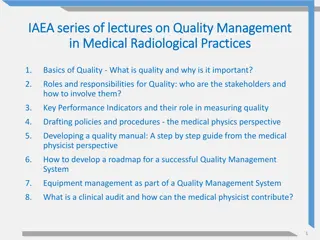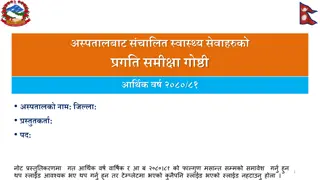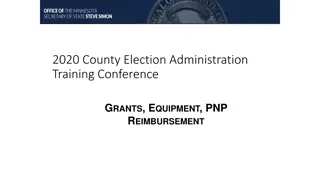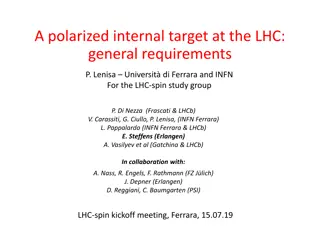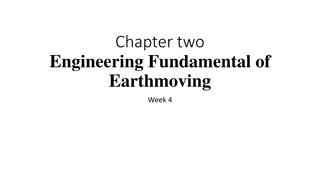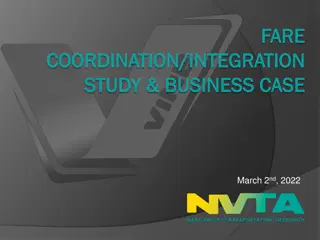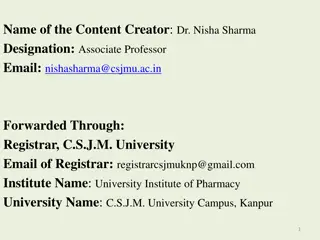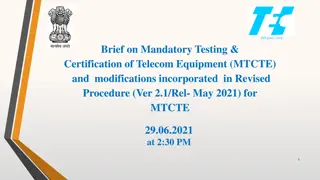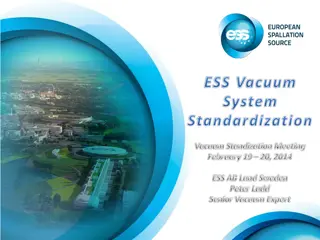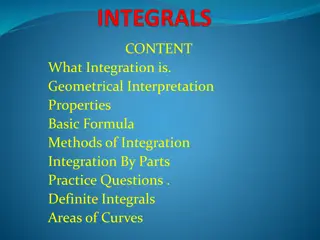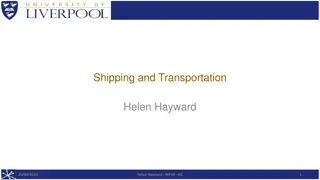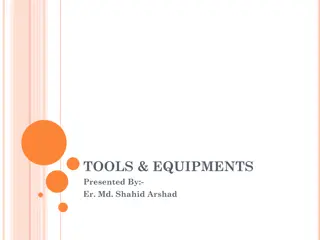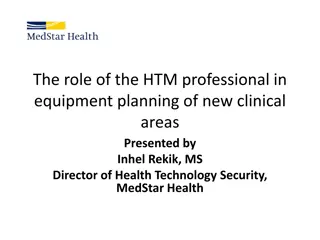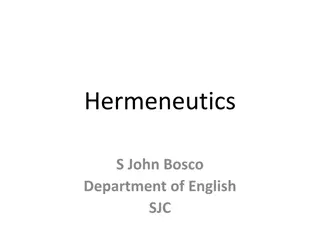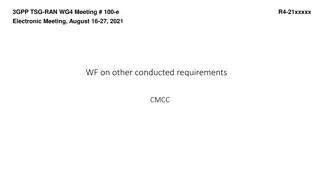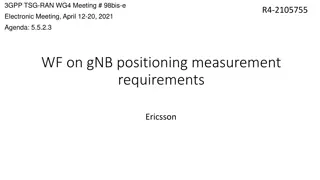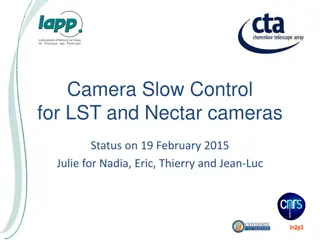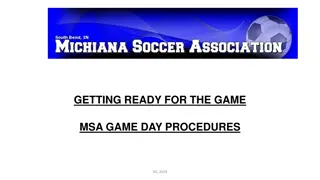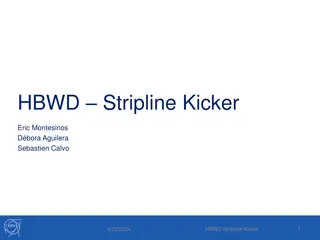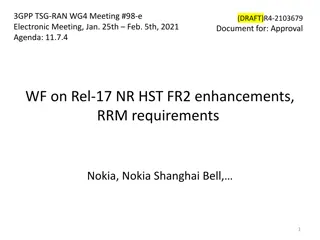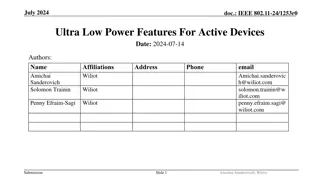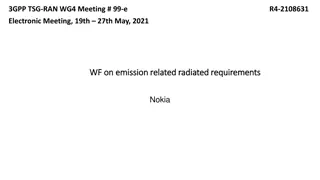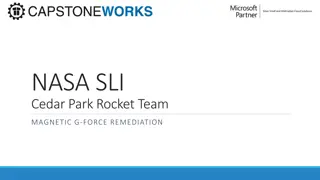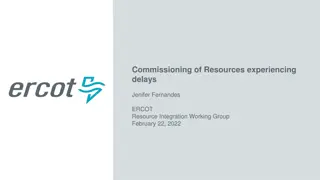AIV Equipment Requirements and Procedures for HERMES Payload Integration Meeting
Discussion at the HERMES Payload meeting in Udine on the test equipment needed for Assembly, Integration, and Verification (AIV) of the Riccardo Campana INAF/OAS HERMES Payload. The aim is to define requirements and procedures for various integration stages, from subsystem level testing to whole payload integration, including the testing of components like detector, BEE, PSU, and PDHU. Details on required test equipment and procurement issues are outlined for each subsystem. Key points include verifying time-tagging accuracy, simulating latch-up, HV ramp-up/down verification, and more.
Download Presentation

Please find below an Image/Link to download the presentation.
The content on the website is provided AS IS for your information and personal use only. It may not be sold, licensed, or shared on other websites without obtaining consent from the author. Download presentation by click this link. If you encounter any issues during the download, it is possible that the publisher has removed the file from their server.
E N D
Presentation Transcript
Test equipments for AIV Riccardo Campana INAF/OAS HERMES Payload meeting Udine 23/01/2020
Test equipments for AIV Aim: define and discuss requirements and procedures for the tests to be performed at the various stages of integration 1. Single subsystem level (Detector, BEE, PSU, PDHU) 2. One-by-one subsystem integration (BEE+PSU, Det+BEE, BEE+PSU+PDHU) 3. Whole payload (Detector+BEE+PSU+PDHU) What is to be done? What do we need? Any procurement issue and/or long-lead needed items? HERMES Payload meeting Udine 23/01/2020
Single subsystem At this stage we should test separately the four main components: detector (with or without crystals), BEE, PSU and PDHU. Points TBC/TBD for the Test Equipments: 1. Detector (Bologna) a. Use of Bologna Arty-Z7 based TE requires an interface board to be designed (one Lyra-BE/quadrant under test at a time) b. Streamlining of acquisition SW i. Use shaped output for functionality evaluation? Amptek ADMCA? ii. Use stretcher output for performance evaluation? Digitizer (which one)? 2. BEE (Palermo) a. Detector emulator: use existing Palermo breadboard with one SDD? (any interface issue?) b. PPS emulator: use F.A. s GPS/PPS Arduino based system? c. How to verify time-tagging accuracy? d. Status of acquisition SW 3. PSU (Palermo) a. How to simulate latch-up? b. How to verify HV ramp-up/down? 4. PDHU (T bingen) a. How can we verify that the packaging algorithm is working correctly? Simulate events (how?) and check that the PDHU is generating and storing the data packets correctly. Subsystem Detector Target Equipment o Test Equipment (Arty Z7) and pulser; o Custom interface for TE; o HV and LV lab. generator; o SW for Quick Look/data analysis; o Radioactive sources; ASIC Functionalities; SDD Performance; GAGG Performance: o Detector Emulator (breadboard); o LV lab. Generator; o PPS Emulator; o SW for Quick Look/data analysis; BEE TC interpretation; TM generation; FEE configuration; ASIC handshaking; ADC commanding; Time Tagging o LV lab. Generator; o Latch-up stimulus /simulator; PSU LV Power on-off verification; HV Ramp-up/down verification; Complete procedure for Detector switch on/off verification; Latch-up circuit verification; o LV lab. Generator; o P/L & S/C simulator; o Desktop/laptop computer with ISIS-SDK o Cables and connectors. o Computer display o Optional: Oscilloscope. iOBC Board power up procedure verification; I2C communication test; Switches interface testing; Temperature sensors reading test; SPI interface testing; UART interfaces testing; Emulated data processing HERMES Payload meeting Udine 23/01/2020
Single subsystem Interface Connectors? Pin matching? Power supplies? (Buffers?) TE for LYRA-BE configuration and acquisition already available and tested HERMES Payload meeting Udine 23/01/2020
One-by-one subsystem AIV Subsystem BEE PSU Target BEE proper PSU commanding; Complete procedure for detector switch on/off verification; Complete Latch-up procedure verification (Safe- Mode); Material o LV lab. generator; o SW for Quick Look/data analysis; o Latch-up stimulus /simulator; At this stage, BEE will be integrated with PSU and then the BEE+PSU will be integrated with the detector. Separate integration testing of BEE+PSU with PDHU and detector? Which one comes first? 1. BEE+PSU (Palermo) a. Is any additional TE required here (i.e. not already procured for the previous stage)? 2. BEE+PSU+Detector (where?) a. Is any additional TE required here (i.e. not already procured for the previous stage)? 3. BEE+PSU+PDHU (where?) a. Is any additional TE required here (i.e. not already procured for the previous stage)? 4. PSU+PDHU testing is needed? (where?) a. PDHU is in charge of activating/deactivating the main power switches coming for the S/C. Perhaps a PSU/PDHU integration is needed first to check that the switching is occurring correctly. The safe-mode shut- down and re-start could be tested too. FEE configuration; Detector operation; Monitoring and HK generation; Time Tagging; TM generation; TM/TC generation; Alert generation; Operative modes; o LV lab. Generator; o PPS Emulator; o SW for Quick Look/data analysis; BEE FEE o LV lab. Generator; o Latch-up stimulus /simulator; o SW for Quick Look/data analysis; BEE PDHU Toggle voltage switches Reading of voltage values o SW PDHU PSU HERMES Payload meeting Udine 23/01/2020
General comments 1. Define duration of each integration/verification activity (start/stop date) a.Define foreseen steps for each test (e.g.: acquire 241Am spectrum with TBD counts for each channel ) b.Draft a plan of each activity and estimate required time (with suitable contingency) 2. Start now to plan for procurement of long-lead items. Examples: a.Design and production of interface boards to TEs Procurement of any needed instrumentation (e.g. power supplies) HERMES Payload meeting Udine 23/01/2020
